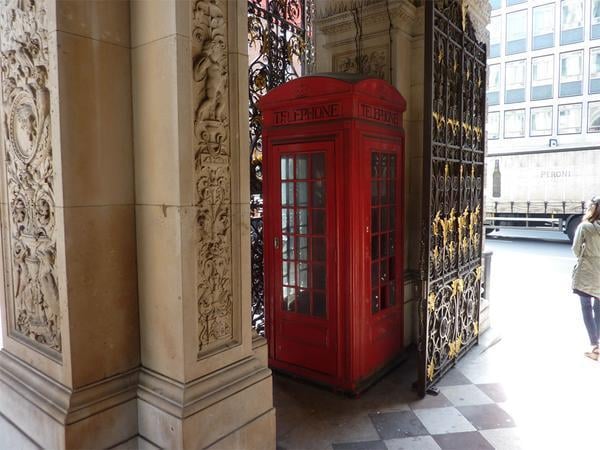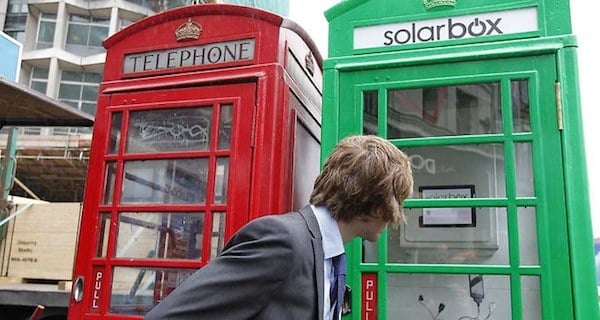Art & Exhibitions
Can Art Save London’s Iconic Telephone Boxes?
The unused booths have plenty of potential.
The unused booths have plenty of potential.
Lorena Muñoz-Alonso


The telephone box in London’s Piccadilly that is housing a program of sound works
Photo via: Holly Pester
Art is coming to the rescue of London’s legendary red telephone boxes, now threatend with obsolescence.
Since September 19th, artists Holly Pester, Aura Satz, Dan Scott, and Lawrence Abu Hamdan have occupied a historic telephone box—installed under the entranceway to Burlington House in London’s Piccadilly—with a running program of sound compositions.
The first red telephone kiosk, named K2, was designed in 1924 by the architect Giles Gilbert Scott. The K2 is famously made of iron, but the Piccadilly telephone box that houses the sound works is the only existing wooden prototype of the iconic design.
Although varied in their approaches, all four artists explore the cultural role of the public telephone as a device that enables intimate conversations within a bustling urban location. Holly Pester, whose piece is currently on display, takes the history of gossip as a starting point, while Aura Satz will explore the artistic possibilities of the electronic dial tone in collaboration with the pioneering synth composer Laurie Spiegel. Dan Scott’s piece will tease out the relationship between the telephone and the paranormal, and Lawrence Abu Hamdan will continue his research into the role of the voice in law by positing the act of listening as a form of witnessing.
Meanwhile, another project is turning the telephone box into a green, solar-powered booth, which will allow city dwellers to recharge their mobiles phones, Art Daily reports. This seems like a very timely idea, given our increasing dependency on smart devices—and their unreliable battery life.

The green Solarbox
Photo via: Les Echos
“The energy is stored in a battery, so you can even charge your mobile phone during the night or when there is no sun,” Harold Craston, co-founder of Solarbox, told AFP. “We wanted to show that we could use public spaces in a positive way, and that London should try to become more green.”
The first Solarbox was unveiled last week outside Tottenham Court Road underground station, at the busy intersection with Oxford Street, London’s main shopping drag.
This is not the first attempt to bring unused telephone boxes to public service. Under the Adopt a Kiosk scheme, decommissioned phone boxes across Britain have been fitted with life-saving defibrillators, transformed into tiny public libraries, and even housed a miniature pub.

The Dog & Bone, a telephone box-cum-pub
Photo via: The Daily Mail